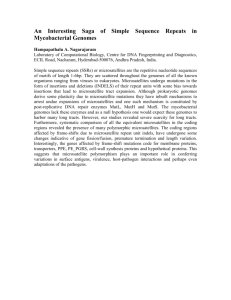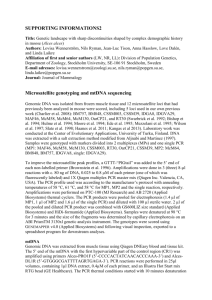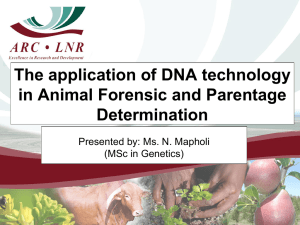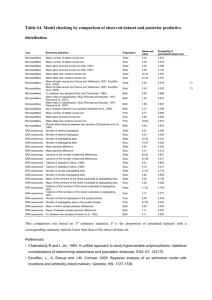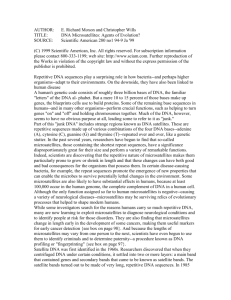molecular_dna_sequencing_applications
advertisement
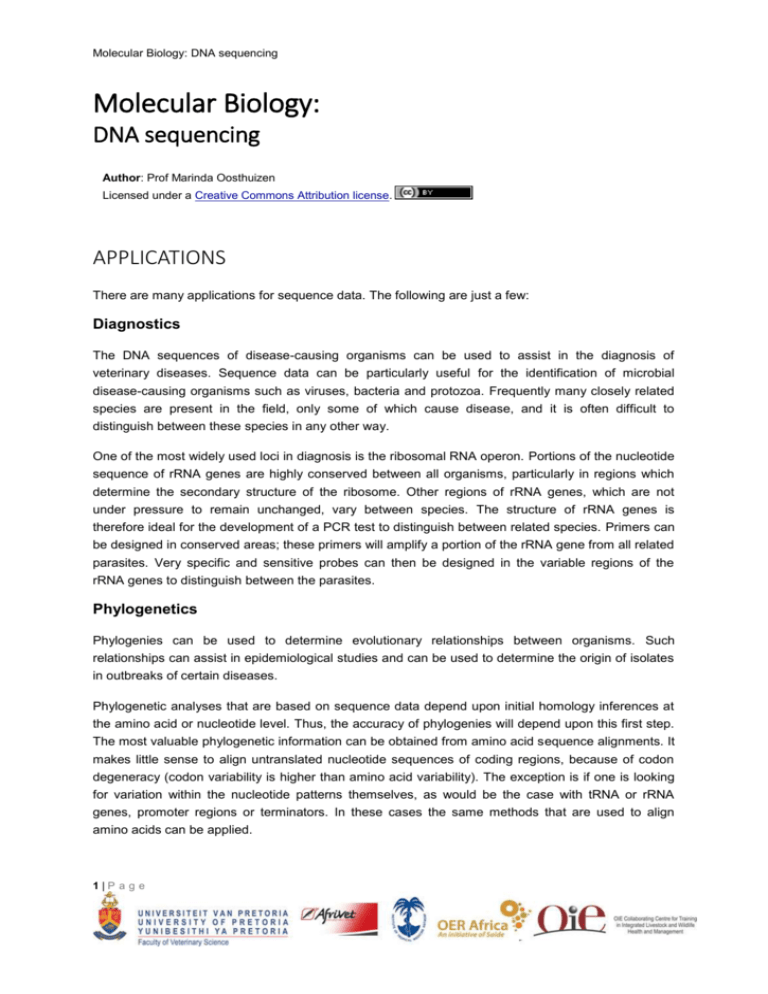
Molecular Biology: DNA sequencing Molecular Biology: DNA sequencing Author: Prof Marinda Oosthuizen Licensed under a Creative Commons Attribution license. APPLICATIONS There are many applications for sequence data. The following are just a few: Diagnostics The DNA sequences of disease-causing organisms can be used to assist in the diagnosis of veterinary diseases. Sequence data can be particularly useful for the identification of microbial disease-causing organisms such as viruses, bacteria and protozoa. Frequently many closely related species are present in the field, only some of which cause disease, and it is often difficult to distinguish between these species in any other way. One of the most widely used loci in diagnosis is the ribosomal RNA operon. Portions of the nucleotide sequence of rRNA genes are highly conserved between all organisms, particularly in regions which determine the secondary structure of the ribosome. Other regions of rRNA genes, which are not under pressure to remain unchanged, vary between species. The structure of rRNA genes is therefore ideal for the development of a PCR test to distinguish between related species. Primers can be designed in conserved areas; these primers will amplify a portion of the rRNA gene from all related parasites. Very specific and sensitive probes can then be designed in the variable regions of the rRNA genes to distinguish between the parasites. Phylogenetics Phylogenies can be used to determine evolutionary relationships between organisms. Such relationships can assist in epidemiological studies and can be used to determine the origin of isolates in outbreaks of certain diseases. Phylogenetic analyses that are based on sequence data depend upon initial homology inferences at the amino acid or nucleotide level. Thus, the accuracy of phylogenies will depend upon this first step. The most valuable phylogenetic information can be obtained from amino acid sequence alignments. It makes little sense to align untranslated nucleotide sequences of coding regions, because of codon degeneracy (codon variability is higher than amino acid variability). The exception is if one is looking for variation within the nucleotide patterns themselves, as would be the case with tRNA or rRNA genes, promoter regions or terminators. In these cases the same methods that are used to align amino acids can be applied. 1|P a g e Molecular Biology: DNA sequencing Microsatellites Microsatellites are stretches of DNA that consist of tandem repeats of a simple sequence of nucleotides. The repeat units are generally di-, tri- tetra- or pentanucleotides (for example, AAT repeated 15 times in succession). Microsatellites tend to occur in non-coding DNA. Microsatellites form through slipped-strand mispairing at replication pauses or single strand annealing following exonucleolytic degradation at a DNA double-strand break. These processes can result in variable numbers of repeat units and thus microsatellites tend to be highly polymorphic. Microsatellites are useful genetic markers precisely because they are polymorphic, and in addition they are locus-specific. PCR primers can be designed in the regions flanking the repeats and using the polymerase chain reaction (PCR), the microsatellites can be easily amplified. The number of repeat units that an individual has at a given locus can be easily resolved using polyacrylamide gels or in capillaries containing a liquid polymer. There are numerous applications for microsatellites. They have been used as markers for certain disease conditions. Some microsatellite alleles are associated, through genetic linkage, with certain mutations in coding regions of the DNA that can cause a variety of medical disorders, such as schizophrenia (Bailer et al., 2002). Because of their high specificity, microsatellites are frequently used as forensic markers to test DNA in court cases, and have been used to identify both human and animal DNA samples. DNA from the crime scene is compared with DNA from the suspect. Match identities for microsatellite profiles can be very high – in fact, the probability that the evidence from the crime scene is not a match with that of the suspect is less than one in many millions in most cases. Parentage analysis is another application for microsatellites. Each individual inherits one length of nucleotide repeats from his or her mother and one from his or her father (individuals with a single band received the same band from both their mother and their father). For captive or endangered species microsatellites can serve as tools to evaluate inbreeding levels. 2|P a g e

